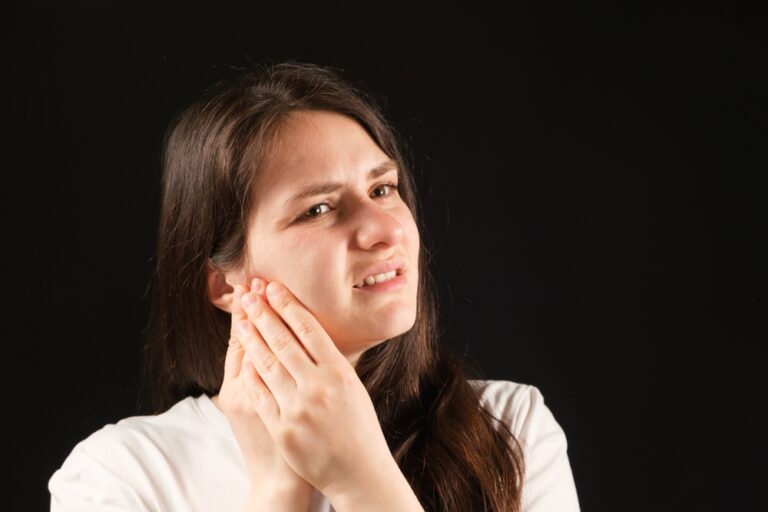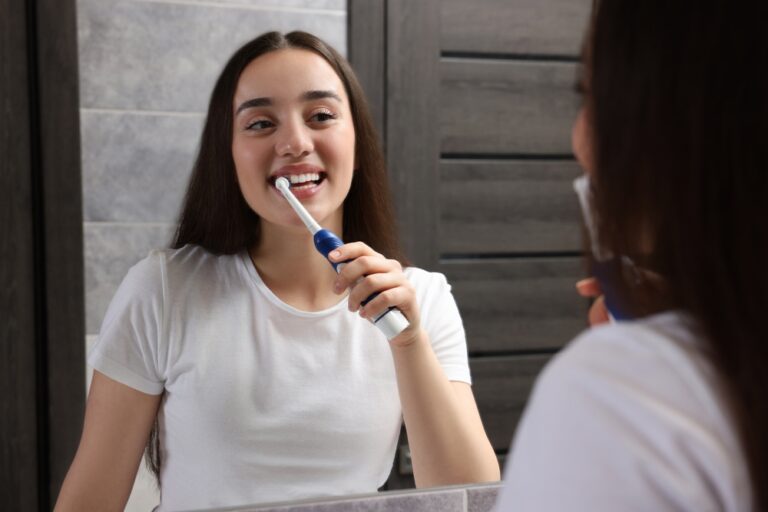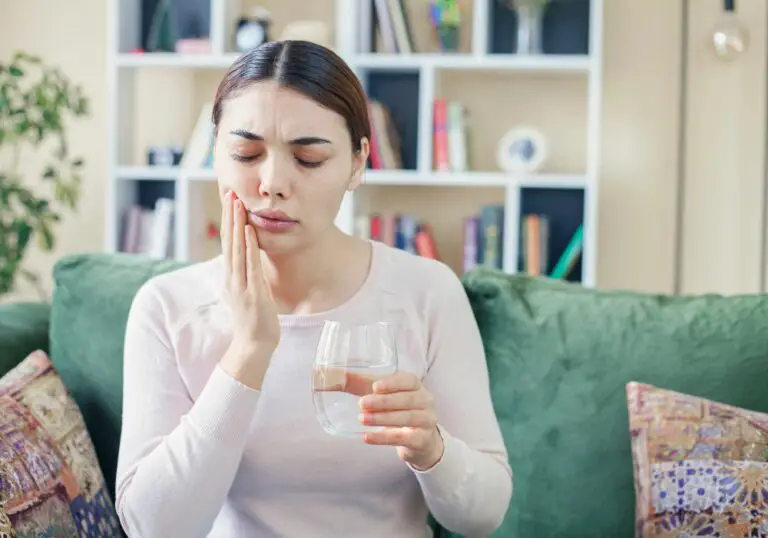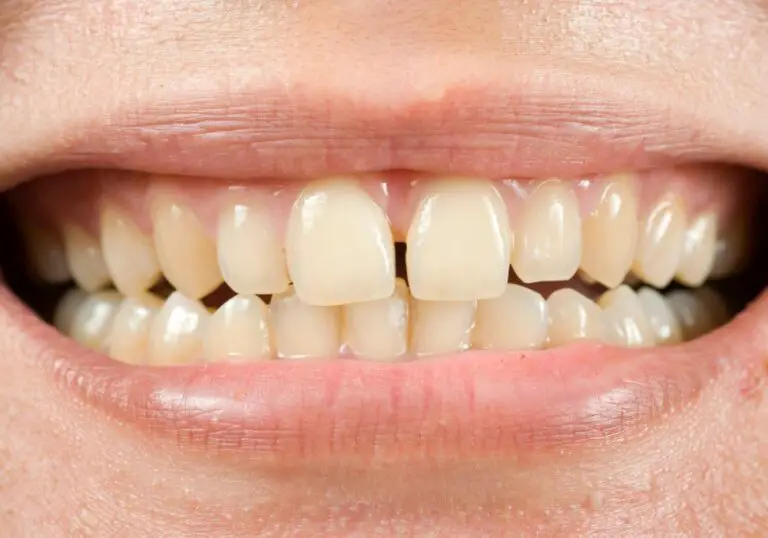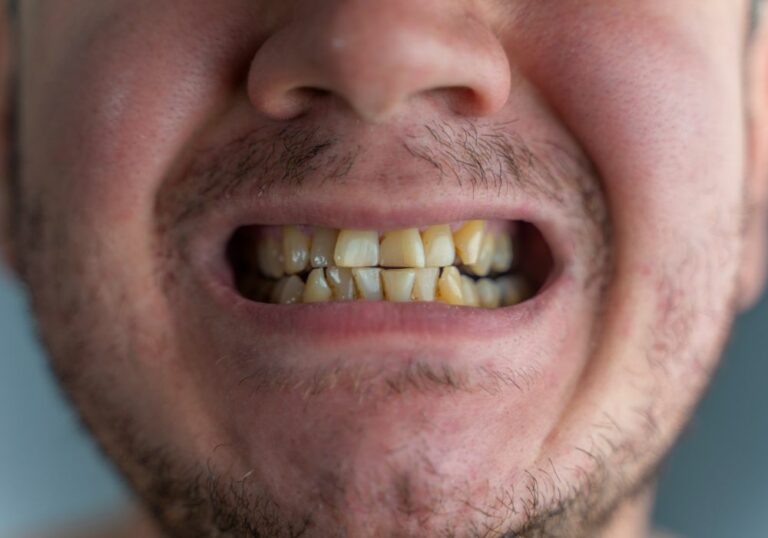Having bright, white teeth is an important part of making a great first impression and feeling confident in your smile. But over time, teeth can become stained or discolored, turning from sparkling white to unsightly shades of yellow, brown or grey.
Many factors can contribute to a gradual yellowing of your teeth. Understanding what causes yellow stains, as well as how to prevent and remove them, is key to maintaining that naturally bright smile for years to come.
What Makes Teeth Turn Yellow?
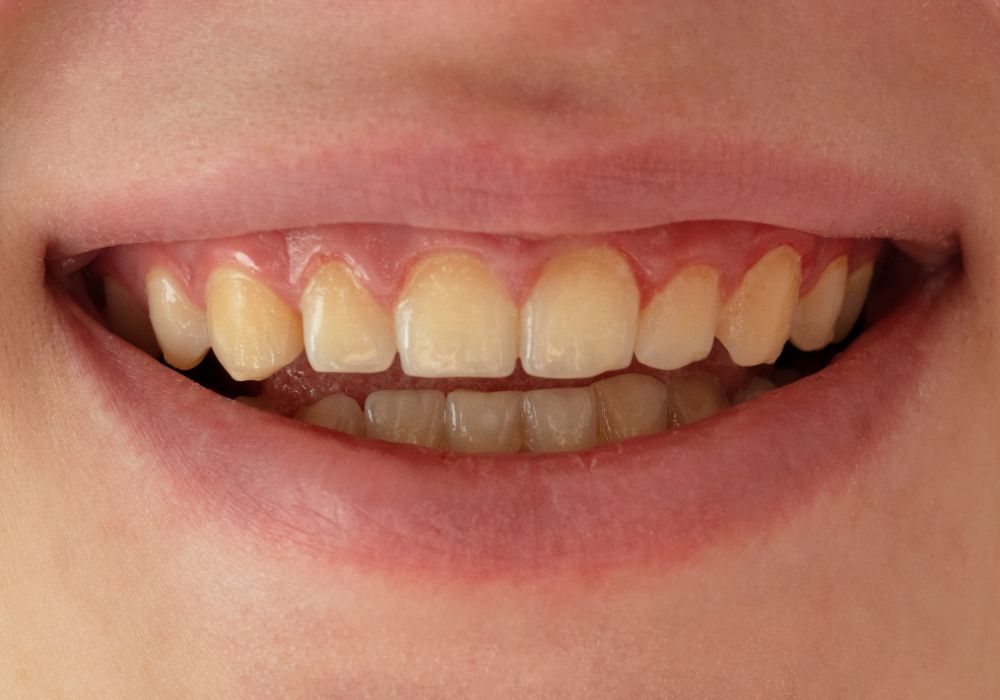
Teeth are made up of multiple layers. The outermost white layer is enamel, which protects the sensitive dentin layer underneath. This dentin layer is naturally a pale yellow. As enamel thins over time, the yellowy dentin shows through more, giving teeth a yellower appearance. Teeth also gradually accumulate stains on the enamel surface from foods, drinks and habits over the years, which can combine with thinning enamel to make them look more yellow.
Here are some of the most common causes of yellow teeth:
Food and Drink Stains
Many foods and beverages can stain teeth or erode enamel over time, especially if consumed frequently. Some top offenders include:
Coffee and Tea: Dark pigments from coffee and black tea bind to tooth enamel, creating stubborn surface stains. Tea is even more prone to staining than coffee due to its higher tannin content.
Wine: Red wine is acidic, which erodes enamel, and also contains chromogens that can adhere to enamel and discolor it. White wine has some of the same risks.
Cola and Dark Sodas: Caramel coloring in many sodas can cling to teeth, as can the phosphoric and citric acids found in most sodas.
Berry fruits: Berries such as blueberries, blackberries and strawberries, can tint tooth enamel. Dried berries tend to be the most staining.
Curries, Sauces and Spices: Curries contain the vibrant yellow spice turmeric, which can definitely stain teeth with frequent consumption. Other deeply pigmented sauces and spices like soy sauce and paprika also pose staining risks.
Balsamic Vinegar: Vinegar is acidic, which erodes enamel over time and allows stains to better adhere. Dark vinegars like balsamic, red wine and malt are especially likely offenders.
Plaque and Tartar Buildup: Plaque occurs when sugary foods interact with bacteria in the mouth. If plaque isn’t regularly removed by brushing and flossing, it hardens into tartar that accumulates on teeth. This can result in both surface stains and gum disease.
Habits That Discolor Teeth
Certain habits can seriously stain teeth and damage enamel. Top habits that can lead to yellowing include:
Tobacco Use: Any form of tobacco – cigarettes, cigars, pipes, chewing tobacco – can significantly stain and discolor teeth. Tobacco is extremely staining, with tar and nicotine adhering to enamel. The longer and more frequently it’s used, the more pronounced yellowing becomes.
Betel Nut Chewing: This stimulant nut common in Asia turns saliva red and erodes enamel. Prolonged chewing stains teeth anywhere from light yellow to dark brownish-red.
Drug Use: Recreational drugs like methamphetamine and ecstasy are very acidic and harmful to enamel. They can cause rapid tooth decay and staining.
Medical Causes of Tooth Discoloration
In some cases, underlying health conditions or medications lead to yellowing:
Enamel Erosion: Gastroesophageal reflux disease (GERD) and bulimia erode enamel through repeated acid exposure from stomach contents. This allows yellow dentin to show through.
Medications: Antibiotics like tetracycline taken by children under 8 can permanently stain developing adult teeth. Other drugs linked to dental staining include antihistamines, high blood pressure medications and antipsychotics.
Fluorosis: Overexposure to fluoride through excessive fluoride toothpaste use or fluoridated drinking water can cause mottled staining and discoloration.
Dentinogenesis Imperfecta: This inherited condition causes defective dentin formation, leading to gray, brown or blue discolored teeth from birth.
Aging: As enamel naturally wears down with age, it becomes thinner and more translucent. This causes the yellowish dentin to show through more, gradually giving teeth a yellower cast. Senior citizens are more prone to yellowing teeth for this reason, combined with a lifetime’s accumulation of stains.
Dental Trauma, Disease and Restorations
Anything that damages the tooth structure or existing dental work can lead to permanent, stubborn discoloration:
Dental Decay: Cavities and tooth decay allow stains to penetrate deeper into teeth and cause brown, black or grey discoloration.
Cracks and Chips: Cracks in enamel allow stains to seep in and can lead to yellow-brown inner staining.
Fillings: Old metal dental fillings can corrode and cause gray or black discoloration nearby.
Dental Injuries: Trauma to teeth through sports injuries, accidents or abuse can cause staining and darkening of injured areas.
Root Canal Treatments: After a root canal procedure, the treated tooth may yellow from the loss of blood supply and underlying staining of the dentin.
Old Crowns or Veneers: Over time, dental crowns and veneers can become stained around the edges near the gumline, or all over.
Preventing Yellow Teeth
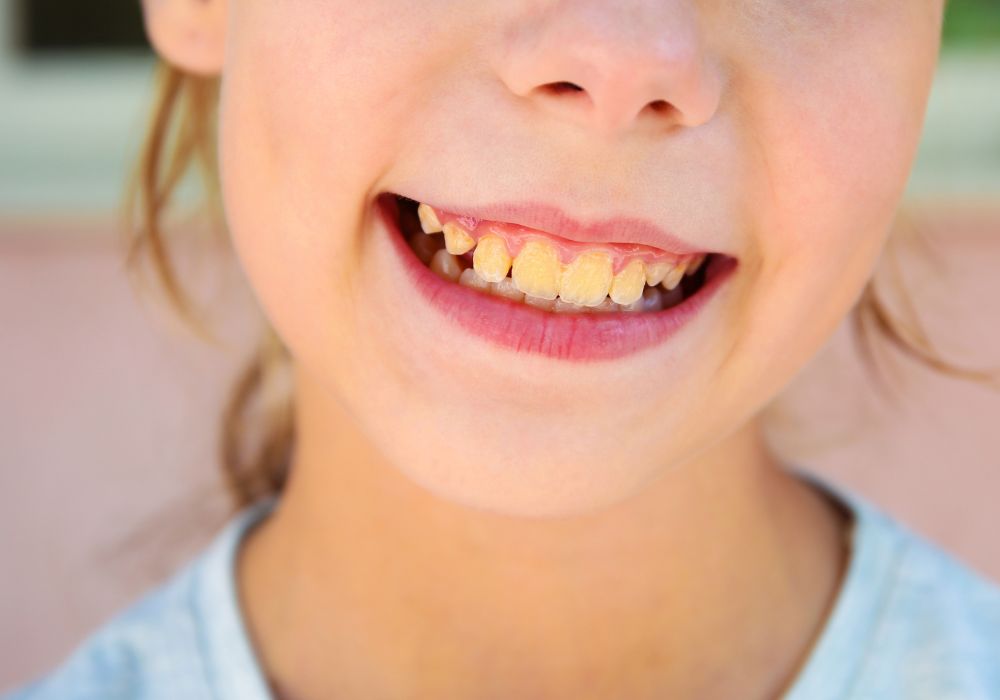
While it’s difficult to completely prevent teeth from yellowing eventually with age, keeping up with these dental care habits can slow the process and maintain a whiter smile longer:
Brush and floss thoroughly: Brush twice a day for two minutes, including gumline and tongue. Floss at least once daily to remove plaque from between teeth. This prevents stains from taking hold in plaque.
Professional cleanings: Get cleanings and checkups every 6 months to keep plaque and tartar at bay before they can stain teeth. Regular patients need 20-50% less whitening treatments.
Avoid smoking and chewing tobacco: Don’t smoke or use smokeless tobacco, which significantly stains teeth. If you do, rinse thoroughly after.
Drink staining beverages in moderation: Limit coffee, tea, wine and sodas. When you have them, drink through a straw to avoid direct enamel contact. Rinse mouth with water after.
Wait 30 minutes after eating to brush: Acid softens enamel, so waiting avoids eroding enamel further by brushing too soon.
Avoid abrasive toothpastes: Whitening toothpastes may gradually etch and thin enamel over time, contributing to yellowing. Opt for milder formulas.
Drink more water: Stay hydrated and end meals by drinking water, which neutralizes acids and washes away lingering stains.
Use enamel-protecting products: Look for toothpastes, rinses and gums with enamel-strengthening ingredients like fluoride, calcium, xylitol or NovaMin.
Get teeth professionally whitened: In-office or take-home whitening kits can remove years of accumulated stains for a whiter smile.
Removing Yellow Stains from Teeth
If teeth have already developed yellow stains, several options are available for reversing discoloration:
Professional Teeth Whitening
For moderate to severe yellowing or stubborn stains, professional whitening procedures work best to dramatically brighten teeth:
In-Office Bleaching uses a high concentration peroxide gel and special light or laser activation for maximum whitening during a single dental visit. Results are most dramatic, but sensitivity afterward is common.
Custom Take-Home Trays involve making dental impressions for custom-fitting plastic trays. These are filled with lower concentration peroxide gel to wear in 1-2 hour increments over 2-4 weeks until desired whiteness is achieved. More gradual lightening, but less sensitivity.
Whitening Strips use thin plastic strips coated with peroxide gel that adhere to front teeth. Recommended for only short-term mild yellowing.
Whitening Toothpastes and Rinses contain mild abrasives and low peroxide concentrations to very lightly remove surface stains with 2-4 weeks of consistent use. Best for maintenance after professional whitening.
Other Stain Removal Options
Beyond whitening, other dental options can restore a whiter appearance:
Dental Cleanings performed by a hygienist remove hardened tartar above and below the gumline to eliminate built-up stains.
Dental Scaling and Root Planing goes deeper under the gums to clean any remaining tobacco or antibiotic stains on root surfaces. Local anesthesia is used for comfort.
Dental Bonding applies a resin coating that masks intrinsically stained teeth, providing a whiter appearance.
Dental Veneers are thin porcelain covers that are bonded over the front of permanently stained or discolored teeth.
Dental Crowns completely cover an entire discolored tooth with a natural-looking porcelain cap.
Which Whitening Method is Best?
The most effective teeth whitening approach depends on factors like:
- Level of staining – mild, moderate or severe
- Location – surface stains, inner stains, or stains under gumline
- Cause of stains – intrinsic discoloration, restorations, trauma, etc.
- Budget – in-office costs more than take-home trays or strips
Consult your dentist to determine which option will provide the safest, most successful whitening results based on your unique situation.
Are Yellow Stains Permanent?
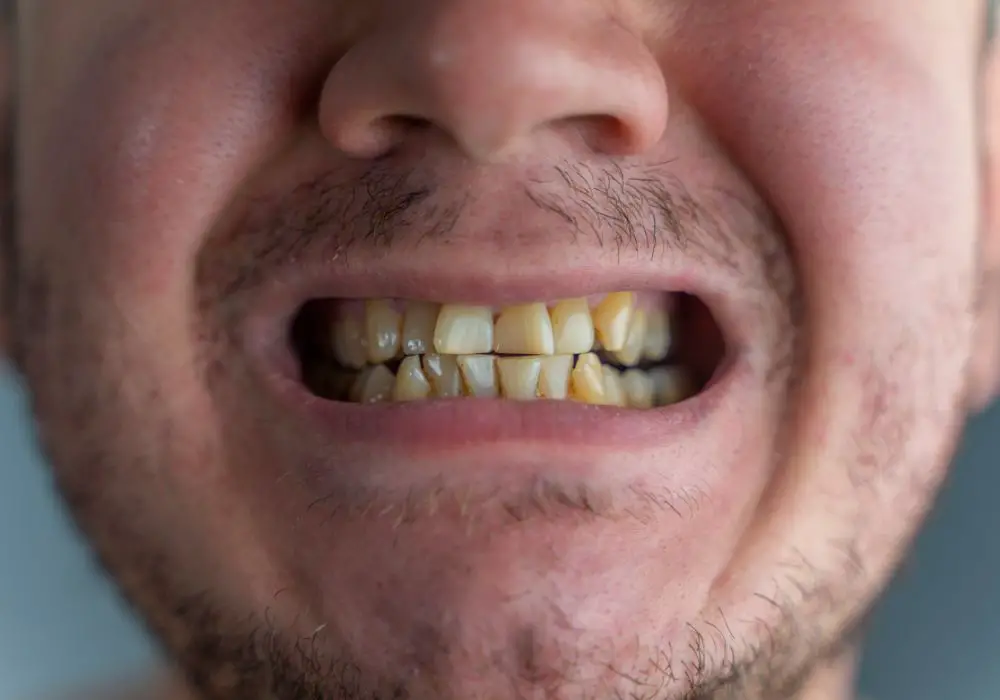
Not necessarily – surface stains and superficial yellowing can often be lightened significantly through diligent oral hygiene and professional whitening. But deep-set intrinsic stains may be impossible to remove completely. Here’s an overview:
Potentially Reversible Stains
- Coffee, tea, wine, smoking stains from habits can gradually reverse through quitting habits, improving hygiene and having teeth cleaned and whitened.
- Mild antibiotic staining, fluorosis spots or thin areas may lighten somewhat through repeated professional whitening sessions.
Difficult to Remove Stains
- Heavy long-term tobacco use often leaves lasting brown stains, but quitting and ongoing whitening/cleanings can slowly reduce discoloration over time.
- Tetracycline antibiotic staining makes teeth mottled light yellow to dark brownish-gray depending on dosage. Removal is very difficult with variable success.
Likely Permanent Stains
- Yellowing in dentin due to prior root canal therapy, restorations, aging, enamel defects or unknown reasons involves intrinsic structural changes. Whitening can’t reverse this type of discoloration.
- Severe intrinsic staining present from early childhood due to illness, injury, antibiotics or genetic conditions like dentinogenesis imperfecta.
- Decay, cracked or fractured teeth, and prior dental trauma cause irreversible dark stains penetrating the inner tooth layers.
The takeaway? Superficial yellowing has good chances for improvement, but severe innate tooth discoloration may be impossible to correct. That’s why practicing lifelong dental care and whitening early on in life are key for keeping your natural teeth looking their whitest!
FAQs About Yellow Teeth
Wondering if your staining is normal or how to banish yellow stains? Here are answers to some frequently asked questions about yellow teeth:
Q: Why are my teeth yellow even though I brush daily?
A: Daily brushing alone often isn’t enough to combat staining from frequent coffee, tea, wine or smoking. Adding daily flossing, dental cleanings every 6 months and occasional whitening can keep teeth whiter between regular brushing.
Q: Can yellow stains be removed from false teeth?
A: Porcelain dentures, partials, crowns and veneers cannot be chemically whitened like natural teeth. Replacement may be the only option for prosthetics with severe yellowing. But regular cleaning by a dentist prevents buildup on false teeth.
Q: I drink a lot of soda – how can I prevent yellow stains?
A: Skip the dark colas and instead opt for lighter colored sodas like ginger ale or lemon-lime. Also try sipping sodas through a reusable straw to minimize contact with teeth. Be sure to brush after consuming to prevent staining and rinse mouth with water.
Q: Why do my crowns look yellow after years?
A: The edges of dental crowns lack protective enamel, allowing stains to penetrate the softer materials over time. Unfortunately, crowns cannot be whitened like natural teeth. Replacing visibly yellowed crowns may be necessary.
Q: Will activated charcoal really whiten my yellow teeth?
A: Activated charcoal is too abrasive for safe enamel scrubbing and risks eroding enamel over time, causing even more yellowing due to thinning. While charcoal can draw surface stains, professional whitening is much safer and more effective for lifting stains.
Q: Can I use teeth whitening strips if I have braces?
A: Whitening strips only contact the front surfaces of teeth, so they’re safe to use with braces as directed. Be extra diligent about removing plaque during whitening, as braces make thorough cleaning more difficult. Ask your orthodontist first.
Q: How long does it take to see whitening results?
A: For minor surface stains, you may notice a difference in just a few uses. But for eliminating deep-set yellowing, it takes consistent application for at least 2 weeks, up to 6 weeks for dramatic brightening. Patience pays off with whitening!
In summary, banishing yellow stains for a brighter smile is possible through diligent at-home dental care plus professional teeth whitening and cleaning treatments. Partnering with your dentist provides the safest, most successful way to achieve your whitest smile possible.

